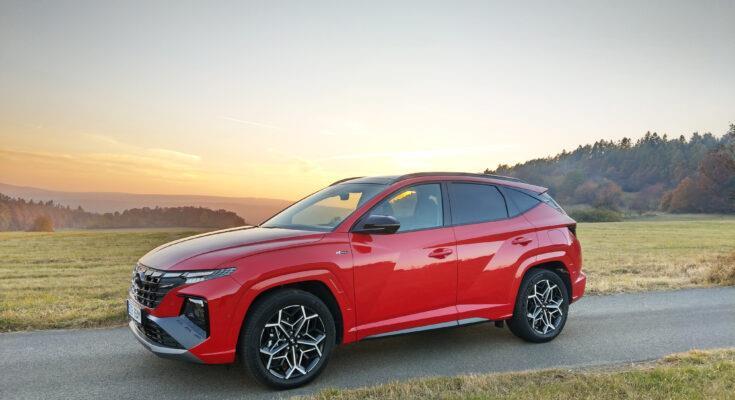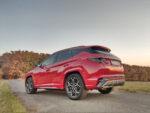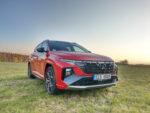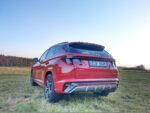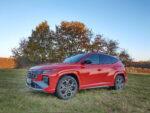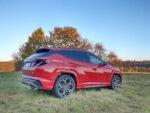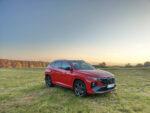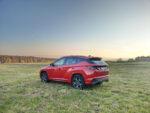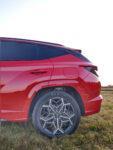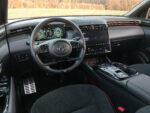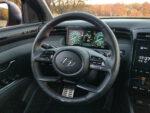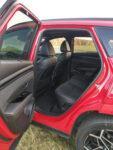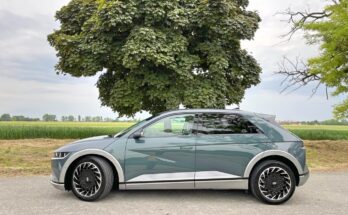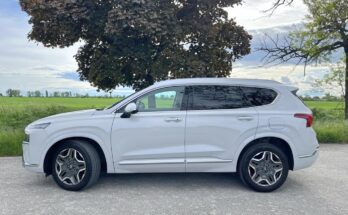The current generation Hyundai Tucson is a very original and expressive car. However, its imaginative shapes can still be spiced up with the sporty N Line package, which the automaker uses on individual models to revive and support their sporty spirit.
Cars equipped with this package are certain forerunners to the sharp "enque" versions that are already available today for the i20, i30 and Kona models . We currently received an imaginative Tucson model equipped with this sports package for the editorial test. In our case, the sports coat of the tested Tucson was supplemented with a plug-in hybrid powertrain.
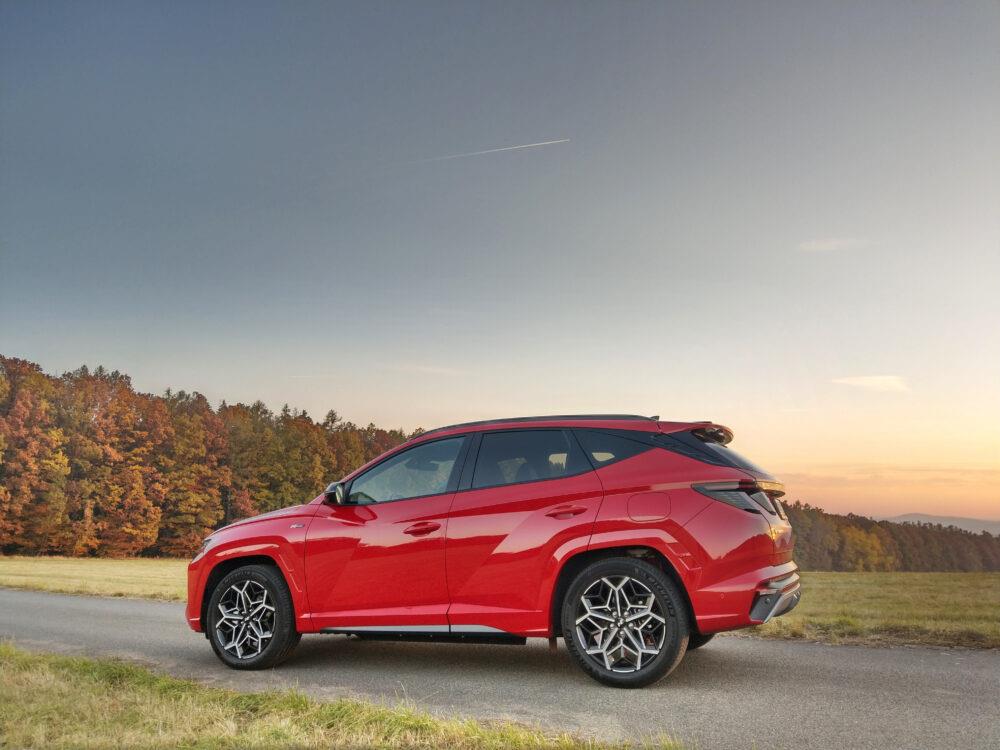
Bold design supported by sporty lines
We already informed you about the bold and timeless design of the new generation of Tucson in a previous review of this model . Imaginative front mask, massive body shaping and dynamically cut rear part, these are clearly the main attractions of the new generation. But now let's focus on the differences that come with the sporty N Line package.
The advertised sportiness is especially evident on the Tucson with more dynamically shaped bumpers, we also have a differently shaped fifth door spoiler, more prominent chrome exhaust tips and bodywork elements painted in the color of the car.
Among the most noticeable are the rims of the car, which thus suppress its robust SUV character, give the car considerable flair and let the effectively shaped 19" wheels stand out.
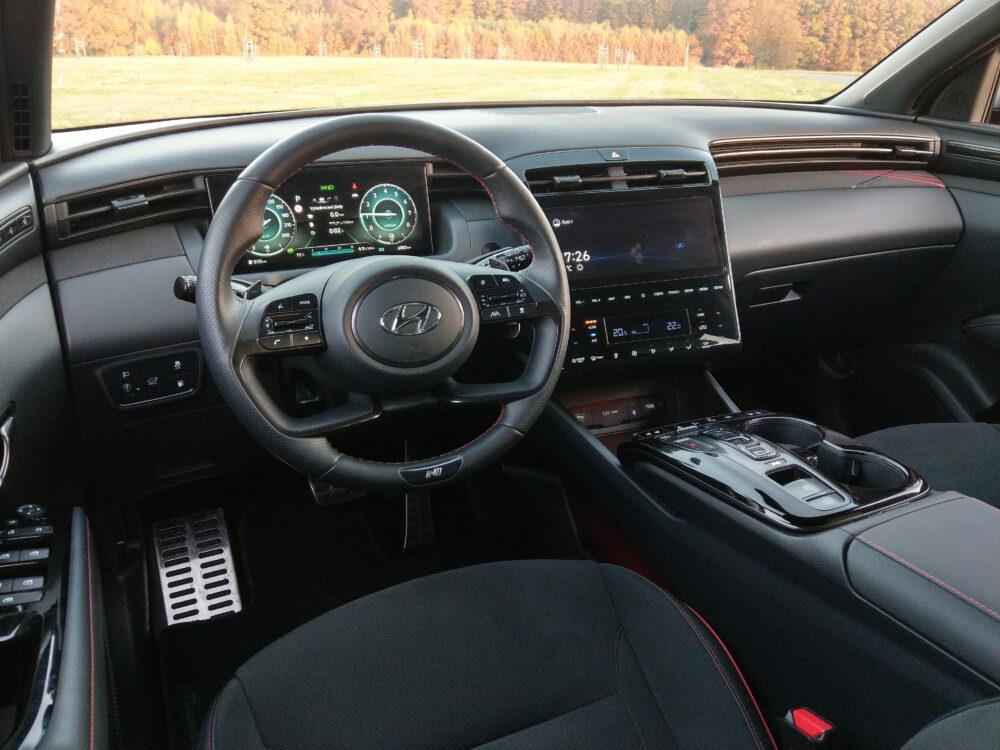
Richly dimensioned interior and sporty accents
The interior of the new generation will surprise you with its contrasting design compared to the sharply cut exterior, because its design is relatively simple and slightly "chubby" compared to the exterior.
Immediately after sitting down, you will appreciate the low position of the dashboard, from which nothing stands out significantly, and thus you are given an ideal view from the car towards the front. The classic instrument cluster is replaced by a digital display that is elegantly "inserted" into the dashboard. The displayed data has pleasant graphics and a clear environment. As part of the driving assistants, the display comes with a new feature that relates to blind spot monitoring. The speedometer or tachometer alarm changes when the turn signal is activated and shows you the image from the corresponding side camera.
The dashboard, which is simple in shape, is further cut through on both sides by a simple, elegant line that originates from the side panels of the doors. The two lines then meet in the center of the dashboard and thus define the area reserved for the on-board infotainment display and individual control elements.
The main on-board infotainment display (10.25") is slightly tilted towards the driver and, similarly to the display of the instrument cluster itself, offers a very pleasant graphic environment.
The central tunnel of the car deserves praise, which, thanks to the button control of the automatic transmission, has an elevated position and thus offers you much more space than is the case with a classic armrest.
The sporty character of the N Line equipment level is of course also very positively reflected in the interior itself, where it is manifested by a combination of black with red stitching, there are also sporty aluminum pedals or sporty shaped front seats with the "N" logo (combining perforated black suede and leather). The multifunction steering wheel and center tunnel are also equipped with the logo of the sports division. I also have to mention the black ceiling of the car.
The interior of the new generation of Tucson should also be praised for its excellent processing and treatment of individual details. Its other positives definitely include interior spaciousness, both in the front and especially in the rear positions. The luggage compartment itself offers a very respectable 558 liters of volume in the case of the tested plug-in hybrid.
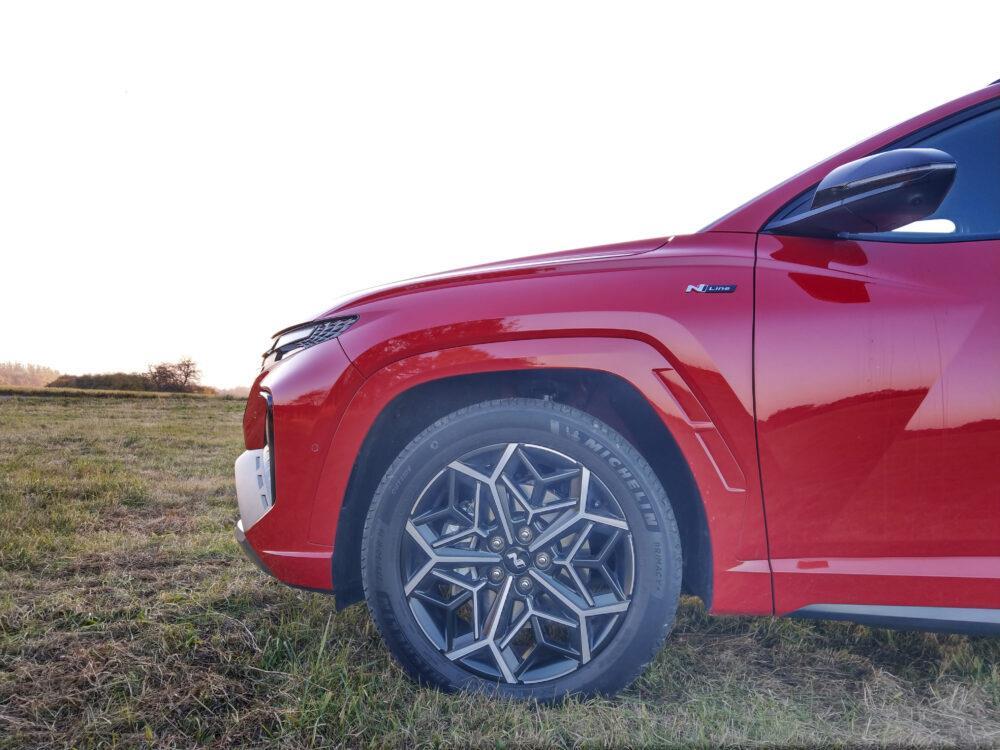
Offered motorizations and driving impressions
The Hyundai Tucson comes with a fairly wide range of engine options. The diesel variants are represented by a turbocharged 1.6 CRDI engine and will offer 85 and 100 kW, while the more powerful of them has mild hybrid technology. The weaker diesel is "front-wheel drive" with a manual six-speed gearbox, the stronger one will offer drive to one or both axles and always cooperates with a seven-speed DCT automatic.
Gasoline engines are available in five versions. These are the basic 110 kW petrol, 110 kW petrol with mild hybrid technology, 132 kW petrol with mild hybrid technology, 132 kW petrol with hybrid technology and 132 kW petrol with plug-in hybrid technology. For gasoline engines, a six-speed manual, six-speed automatic or seven-speed DCT automatic is available.
The tested Tucson was equipped with a plug-in hybrid powertrain, the basis of which was a turbocharged 1.6 T-GDI gasoline engine working with a six-speed automatic, an electric motor and a battery with a capacity of 13.8 kWh.
In the case of the plugin, the supercharged 16-liter is tuned to 132 kW of power and 265 Nm of torque. The electric motor itself will then offer 67 kW of power. The total combined output then reaches a very respectable value of 195 kW of power and 350 Nm of torque. The Tucson plug-in hybrid then promises acceleration from 0 to 100 km/h in 8.2 seconds and a maximum speed of 191 km/h.
The choice of a plug-in hybrid powertrain brings under the Tucson's hood not only the most performance of the offered variants, but also the possibility of driving purely on electric energy, which brings with it traditional advantages in the form of a quiet and comfortable driving performance. Plug-in should therefore be chosen by those who are used to and have the opportunity to charge the car regularly. Charging the car is then possible with a charging power of up to 7.2 kW, so you can charge the car within two hours. The quiet and comfortable driving of the purely electric mode will also offer a decent range, which is officially stated at a value of 62 km.
Emotionally, the 16-cylinder gasoline engine connects quite quickly, but the connection takes place very smoothly and is hardly noticeable in the interior of the car. In the event of a low battery charge, the Tucson still retains sufficient capacity and begins to behave like a classic hybrid that tries to save fuel where it can.
As part of the city and district pace, you will make full use of the electrified drive and thus you are able to quite successfully push down the consumption of the gasoline unit. It is difficult to talk about a specific value here (the range is really wide), because we have a large number of variables here, from the current state of battery charge, to the weather or, for example, the driving profile.
But what the plug-in hybrid Tucson doesn't really like is the highway. It offers enough power, it is pleasantly stable at higher speeds, but its consumption rises here and starts to move around 9 liters per 100 km.
The Tucson demonstrates decent dynamics when switching to sports mode, which tries to get the most out of both the classic combustion engine and the electric motor. It goes without saying that the car's response to the gas pedal changes, the transmission changes, and the adaptive chassis itself also hardens. You will appreciate the perceptible liveliness of the sports mode most within the framework of flexible acceleration. Unfortunately, thanks to its almost two tons and rather comfortably tuned chassis, don't expect any "turning" specialist. In combination with a plug-in hybrid drive system, a calm and deliberate pace suits him best.

In conclusion
The basic Tucson in the Start equipment level with a 110 kW petrol sixteen-cylinder engine and a six-speed manual starts at a very respectable amount of CZK 529,990 including VAT. You can buy the basic diesel 1.6 CRDi from CZK 599,990, and the lowest trim level Start even offers the classic Hybrid, from CZK 699,990 including tax. In addition to the classic versions, a new plug-in hybrid is also available in the next Comfort trim level, from CZK 899,990 including VAT.
The price list of the tested sports version is divided into two levels, the basis is the classic N Line, where you can buy a Tucson from CZK 669,990 including VAT (with basic petrol and a six-speed manual), the offer also includes mild-hybrid, hybrid and plug-in hybrid variants . The highlight is the N Line Style equipment level, which is the same as the classic N Line, only "jumped" in price by the Style package, i.e. by CZK 60,000. The tested plug-in hybrid then fills the highest price positions, in the case of the N Line version you can buy it from 1,019,990 CZK including VAT (the N Line Style version from 1,079,990 CZK).
The current generation Hyundai Tucson is still a very bold car for me, its exterior appearance is imaginative, original and clearly distinctive. The currently tested version of the N Line underlines its sporty spirit and dynamism, which is firmly rooted in its basic shapes. The car also has a sufficiently spacious interior with high-quality workmanship and comfortable driving characteristics.
The choice of drivetrain then depends on the priorities of individual users. The tested plug-in requires regular recharging and its scope ideally within urban and suburban agglomerations.
Source: Author's text
Image source: Author's own photos

